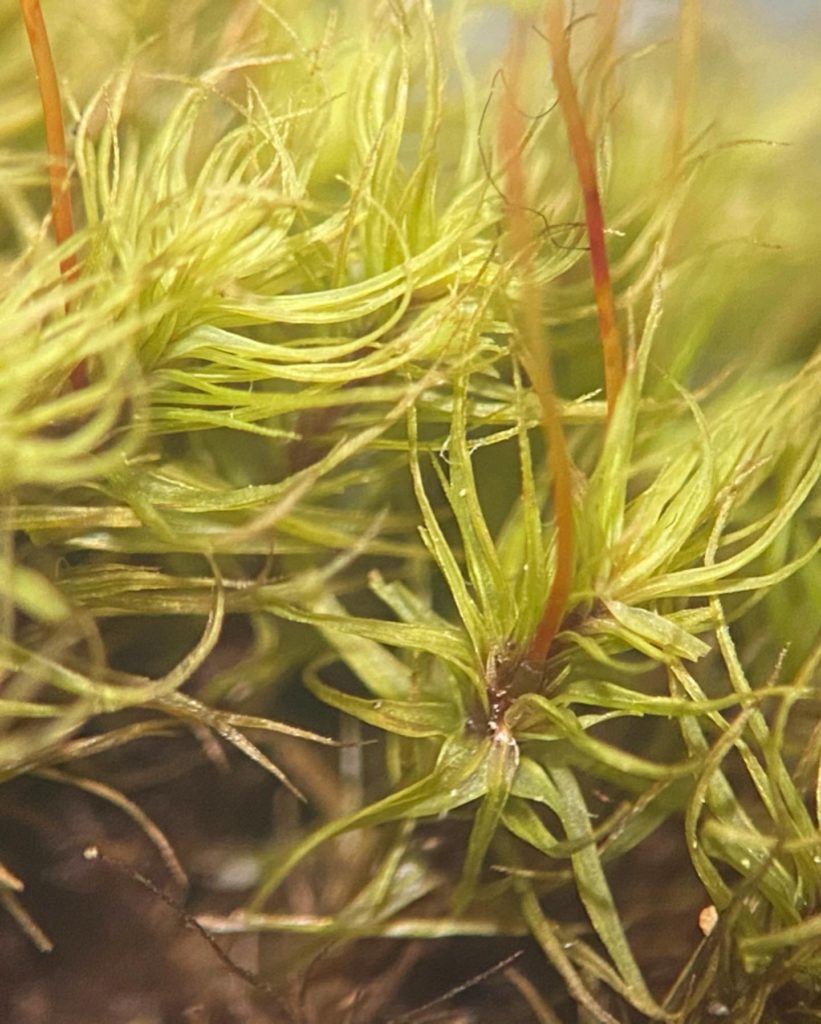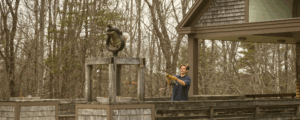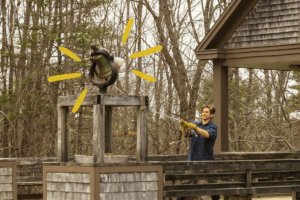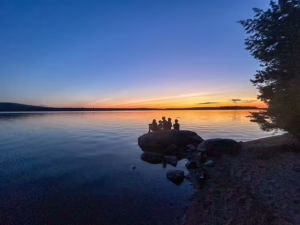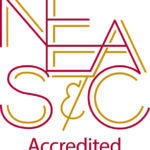 Natural History Faculty, Eric McIntyre, made a surprising observation last week while walking on Chewonki Neck: a colony of moss featuring slim, protruding orange stalks topped with tiny, lime-like globes.
Natural History Faculty, Eric McIntyre, made a surprising observation last week while walking on Chewonki Neck: a colony of moss featuring slim, protruding orange stalks topped with tiny, lime-like globes.
“I’ve only knowingly come across this moss one time before, but it jumped out again last week on a rambling run through the forest and along the coast of Spartina Point,” says McIntyre. “The distinctly round capsules of Bartramia pomiformis, the apple moss, are hard to mistake. Given that the last place I saw it was on the ledge of a wet cliff face in Upstate New York six years ago, I was surprised to have this colony grab my eye from a sloping bank of soil just above the salt marsh on the west shore of Chewonki Neck.”
 Bartramia pomiformis is often found on rock ledges, ravine walls, and earth banks. These sites are typically humid and shaded, often near streams and rivers. Although it is a fairly common type of moss, this is the first time McIntrye has observed it in Maine
Bartramia pomiformis is often found on rock ledges, ravine walls, and earth banks. These sites are typically humid and shaded, often near streams and rivers. Although it is a fairly common type of moss, this is the first time McIntrye has observed it in Maine
“Every encounter is a new data point as we expand our understanding of a species or an individual. A good reminder to keep an open mind, to hold off on assumptions regardless of the subject matter,” says McIntyre.
Regarding the capsules: “When young, bright green globes resembling tiny apples. At maturity, 1-2 mm long, inclined or perpendicular to the 1-2 cm stalk, round when moist, but elongate and deeply furrowed when dry. The convex lid falls off, revealing red teeth.” – McKnight et al. 2013
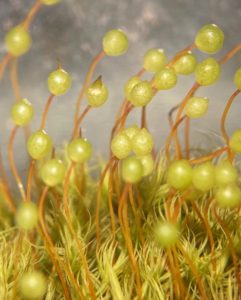
Thank you, Eric, for your inspiring observations and wonderful photos, (Eric produced these close-up photos using a smartphone and microscope). Wishing you all surprising and delightful spring observations!
McIntyre earned his B.S. in Conservation Biology at St. Lawrence University in 2015 and much of his senior research was devoted to understanding the ecology of common northern forest mosses. McIntyre’s thesis research was completed under the guidance of Dr. Karl McKnight, one of the authors of Common Mosses of the Northeast and Appalachians, a user-friendly field guide to mosses of our region.
